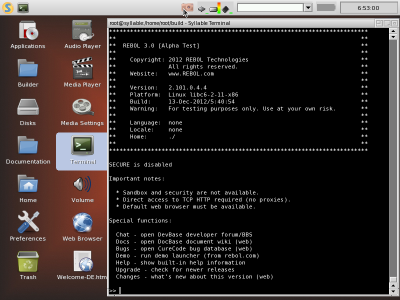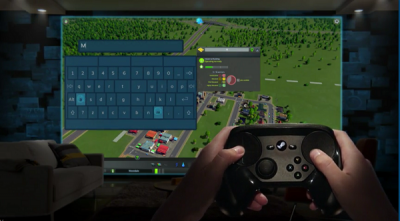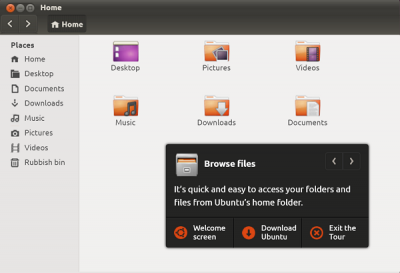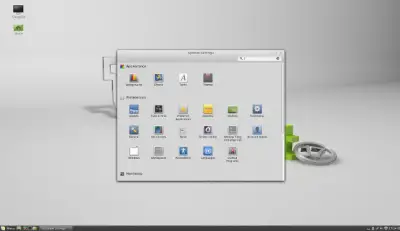Linux, to date, remains one of the best-known and most used open-source operating systems. It is one of the most popular versions of the UNIX operating System with open source as its source code. Primarily, it is composed of 3 components, namely,
- Kernel – forms the core part of Linux. It manages all major activities of the operating system and consists of various modules which interact directly with the underlying hardware.
- System Library – Programs via which application programs or system utilities access Kernel’s features.
- System Utility – Programs of this utility are specialized to perform individual-level tasks.
Linux alternatives to Windows
Let us take a look at some of the free and open-source Linux-based operating systems for your Windows computer.
1] UBUNTU OS
It is the most renowned PC OS alternative running everywhere from PC to the cloud and from smartphones to tablets. The highlight of the OS is its simplicity and dependability. The User Interface of the OS is pretty simple. The best part about the OS is its open-source license. As such, any user desirous of introducing changes to the OS can tweak it to his liking and improve upon it. Interested in taking a tour of the OS, visit here.
2] Zorin OS

There has been a visible increase in the share of Zorin OS user since it morphs the looks and the feel of Windows. The emulation of the user interface makes it easier for users to get accustomed to the OS without much effort. It is a multi-functional operating system designed specifically for Windows users who want to have easy and smooth access to Linux. In addition to the above, there are unique programs like Background Plus, Web Browser Manager and more—home page.
3] Linux Mint
If your workstation is crammed with multiple desktops, Linux Mint should find a mention among them even if it doesn’t happen to be your main production desktop. Following the widespread report of Cinnamon desktops freezing, the developers of the OS have come up with a version that brings a fix for it. Users can, therefore, in case of system freeze, use the keyboard shortcut ‘Ctrl+Alt+Esc’ which restarts the file manager and Settings section. A great easy-to-use alternative for Windows users. Home Page.
4] Syllable OS

The installation of the operating system is not overly difficult for anybody with experience in partitioning. For the first-time users, there is online documentation available which does a fairly good job in educating the user. It’s pretty fast and responsive, as most applications fire up quickly. Moreover, the layout is simple and easy to understand. Download here.
5] Steam OS

The OS runs on a modified version of Linux and is believed to be baggage of mixed reviews. It lacks a user-friendly interface which makes the process of navigation somewhat difficult. As soon as you venture beyond the home screen, you find yourself in a cobweb of menus that don’t fit together properly. The good part is the standard SteamOS installation includes a recovery partition on the hard drive. You can use this partition to restore the system drive to its original state in case of any event of misfortune.
Which Linux is most like Windows?
Zorin OS is probably the most identical to some Windows versions. It comes with a Windows like Start Menu, which includes all the apps, tools, etc. It has a Taskbar, where you can pin apps, files, folders, etc. Apart from that, you can also use Ubuntu with some mods to make it look like Windows.
More Linux distributions that look like Windows here.
Is Linux a good replacement for Windows?
It depends on what you want to do on Linux that you could not do on Windows. If you want to use Linux for programming, you can also consider using Windows with some third-party tools. However, if you want everything natively, you might want to opt for Linux distributions instead of Windows.
Also read:
If you have any suggestions to add, please do so in the comments section below.


Both Haiku OS and React OS are NOT based on Linux.
Oops, will get the changes made soonest. Thanks. :)
Unix or Linux is great alternate since many users of XP cannot upgrade to Windows 10 due to RAM issues
Thank you for not mentioning Zorin. Some people claim Zorin is a real XP alternative, but it’s an atrocious distro.
Linux Mint is the best alternative for Windows XP.
But you don’t have to take my word for it!
http://www.zdnet.com/article/why-linux-mint-is-a-worthwhile-windows-xp-replacement/
I look forward to Mint 18 in a few months; to be built on Ubuntu 16.04 with latest kernel; I use Mint and like it, but for me on Win7 Acers to Dell Inspirons core i5/i7, Mint 17.2/17.3 with Cinnamon accrues stability, modprobe, and intramfs problems after enough “priority 1 thru 3” updates (likely as highest supported kernel is 3.19, some “1-3” updates also geared to include newer and “priority 4 and 5” updates blacklisted as they’re for newer kernels only…not good, since many such updates patch security or encryption issues, leaving one playing “Do I feel lucky?”). This has been true for me whether using generic 3.xx kernels, or so-called “Exton” kernel or 17.3 Mint 4.2 kernel via software manager.
I also hear that underlying Ubuntu 16.04 unlike 14.04 will permit safe removal of LibreOffice as 16.04 will not share integral files with the LibreOffice core…there’s some space back on USB installs, if true. Hope Mint 18.x series will have kernels reducing need for blacklisting important security and encryption updates.
Meanwhile, if anyone with 64 bit device would like to try a distro looking more like Windows, knock wood, I’ve found that Mint Mate 17.2/17.3 on full install to disk or ultra-fast USB (and blocking “priority 4 and 5” updates) is more stable for me, has no modprobe/intramfs issues, and is rated by many to be able to run apps as well as Cinnamon (though I’d suggest the free app “Variety” if you want backgrounds in Mate DE); I find such Mate DE despite updates milieu has few encryption issues and via (g)ufw withstands device remote pen tests. Supports WIFI well on newer devices (Win7 up), but can have issues seeing CDs (Google solutions for your hardware, if any). Very low sipping of resources for OS, devotes resources to apps. Good common printers support. Hope this helps, cheers!
Actually we were in the process of updating the post and that’s when you must have seen only 3 alternatives, instead of the now 5 – including Linux Mint & Zorin.